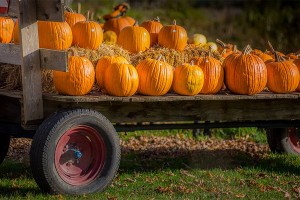Birth-o-Matic
Be glad your obstetrician doesn’t own the Blonsky device, a birthing machine that spins a pregnant woman at high speed, using centrifugal force to eject her newborn into a net. The U.S. government awarded a patent for the contraption in 1965, but for some reason, it never caught on. Nonetheless, it will be immortalized in song at this year’s Ig Nobel Awards, on September 12 at Harvard’s Sanders Theater.
The Ig Nobels, of course, are awarded each year to “honor” the most, let’s say, unusual research. Winners, amazingly, often show up to receive their prizes, which are handed to them by actual Nobel laureates. The ceremony also features a mini opera, and for this year’s show, Ig Nobels founder and librettist Marc Abrahams dug into the story behind the Blonsky device, which won its dubious prize in 1999 (category: “Managed Health Care”).
“When we learned about it, we had two big questions,” says Abrahams, who also edits the journal Annals of Improbable Research. “First: Was this ever used? We think not, but we don’t know. And then: What kind of person would think of this?”
It turns out the device was conceived by George (an MIT grad) and Charlotte Blonsky. Both Blonskys are deceased, but Abrahams managed to track down their niece, who told him how the childless couple had wanted to ease the birthing process for women. One day at the Bronx Zoo, they saw an elephant turning in circles as she prepared to give birth. Eureka!
Their patent, complete with really awkward diagrams, earnestly describes a “gentle, evenly distributed, properly directed, precision-controlled force” and insists on a speed governor that shuts off the machine if it hits upward of eight Gs—or about when a fighter pilot might black out.
Abrahams’s libretto dramatizes the story, elephant included. Local soprano Maria Ferrante is slated to sing the part of Charlotte, while the orchestra will be composed of local surgeons and medical researchers, led by Thomas Michel, a renowned cardiovascular specialist who also plays a mean accordion.


